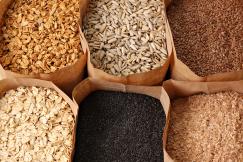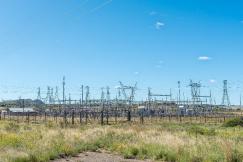Measured hours worked in developing countries are consistently lower for agricultural workers than for non-agricultural workers (Gollin, Lagakos, Waugh; 2014) and have contributed to the observed productivity puzzle in agriculture (Mensah, Owusu, FosterMcGregor, Szirmai, 2022). This finding is puzzling since agricultural workers are the poorest workers, on average, and so they should have strong incentives to supply labour in order to bolster their low consumption levels. Historical evidence suggests that workers on average supply less hours as they get richer over time (Ramey and Francis, 2009; Boppart et al, 2020), and cross-country data show that poorer countries on average work more hours than richer ones (Bick et al, 2018). These studies are consistent with preferences that lead to higher working hours when consumption levels are lower. So why are the poorest residents of today’s low-income nations working so little? This project explores two distinct hypotheses for the relatively low hours of agricultural workers. The first is mismeasurement. In particular, the study evaluates the case that standard surveys – like the LSMS – under-measure hours for agricultural workers, who may have a difficult time separating actual work hours from other hours that they do not count as work. For example, speaking with other farmers about crop prices, transportation issues, and planting practices should be counted as work but individual farmers may not count simply talking as “work.” The second hypothesis the study considers is that agricultural workers supply little labour because of a lack of opportunities for productive work. This hypothesis is motivated by the recent studies of the ultra-poor showing that asset transfers, in the form of livestock, lead to substantial increases in hours worked (Bandiera, Burgess, Das, Gulesci, Rasul, Sulaiman, 2017). The idea is that, due to small farm size, limited market access, remoteness, or any number of other constraints, rural farmers may simply run out of productive activities many weeks of the year, which helps keep their income levels low.
This study evaluates these two hypotheses using new nationally representative surveys in Ghana. The surveys will feature three arms. The first will be a standard “LSMS-style” employment/hours questionnaire to one group of respondents, which will serve as the frame of reference. The second will be a time diary, which is similar to others that have been collected, though less systematically than the standard employment/hours questionnaire. The third will be an enhanced time use diary that not only records activities hour by hour, but also asks the respondents to report how much they like each activity, and whether they view it as mostly about helping generate income or farm production, or, on the other hand, mostly about leisure or home-production of services. In addition, the surveys will feature two other modules aimed at trying to understand the distinction between work, home-produced services and leisure. The first of these will ask about a large set of activities that the respondents may or may not have spent time on recently. For each activity, the respondents will rate how much they enjoy spending time on the activity from 1 to 10. This parallels a module conducted in the United States as part of the American Time Use Survey. The second additional module will ask detailed questions about whether the respondents feel they are constrained in their work opportunities. These questions will be a mix of subjective questions and specific vignettes designed to understand the constraints on supplying more labour, and how these vary between agricultural and non-agricultural workers.
The project explores the relatively low hours of agricultural workers and the productivity challenge in agriculture to find out whether this is linked to mismeasurement and a lack of opportunities for productive work in agriculture. The study findings will be used to identify bottlenecks, inefficiencies, and areas for improvement, including skill development and mechanisation of the sector amongst others, and the implementation of targeted policies that contribute to increase the productivity of farm workers. The project will also contribute to the development of improved data collection methods and tools in agriculture.




















































